 |
 |
 |
 |
 |
 |
 |
 |
 |
 |
 |
| Last Updated: Mon Feb 11 18:47:58 UTC 2019 |
 |
 |
 |
 |
 |
 |
 |
 |
 |
 |
 |
| Last Updated: Mon Feb 11 18:47:58 UTC 2019 |
| Barrow Island Imagery |
|
This
web
page
contains
a
selection
of
pictures taken in 1979-1980, during my 18
months
working on Barrow Island for WAPET (now Chevron), in the North West
Shelf region. Barrow Island is a pristine desert habitat, and a
protected natural reserve. As it has been isolated from the mainland
for
tens of thousands of years, it has numerous unique species, and some
species which have since disappeared from mainland Australia. Updated
in
May, 2010, with additional linescanned 35 mm slide imagery recovered
from my archive. Photos and text ¿
1979,
1980, 2005, 2010 Carlo Kopp; Imagery: Exakta VX500 / Meyer-Optik
Görlitz 50mm f2.8 Auto Domiplan, Kodachrome 25 and Ektachrome 64,
linescanned using Nikon 5000ED, retouched/corrected/cropped and
reduced;
some images are flatbed scans from prints. |
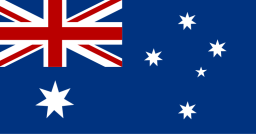 |
|
Barrow Island Mammals |
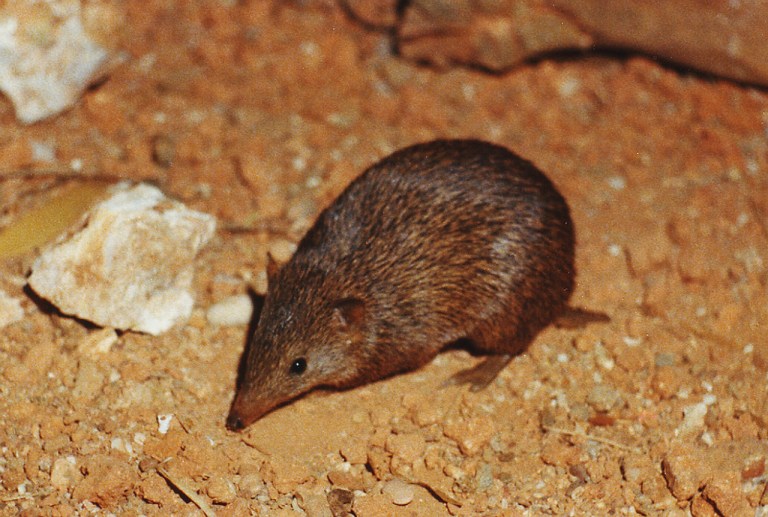 Bandicoots are arguably ubiquitous on
Barrow, found almost everywhere. Small enough to fit in the palm of a
hand, these tiny marsupials were always interested in begging for a
snack (Flatbed scan from print).
|
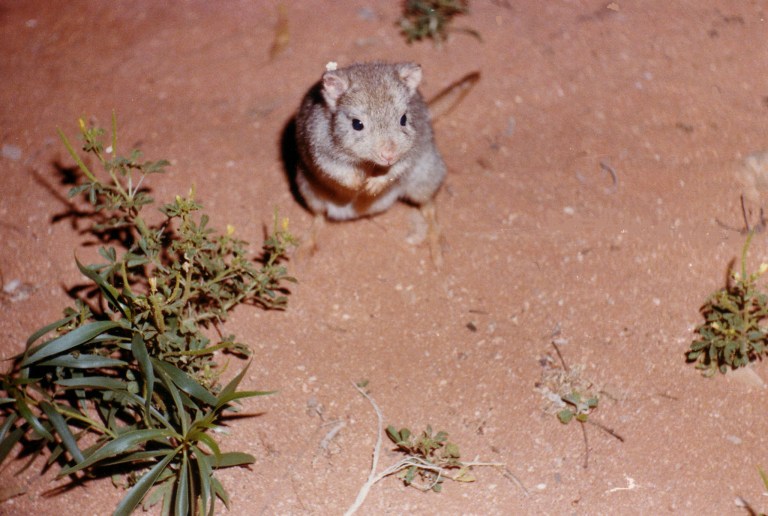 The small Kangaroo Rats are
noctural and
quite shy compared to the bandicoots and wallabies. This was a lucky
shot on the day
(Flatbed scan from print).
|
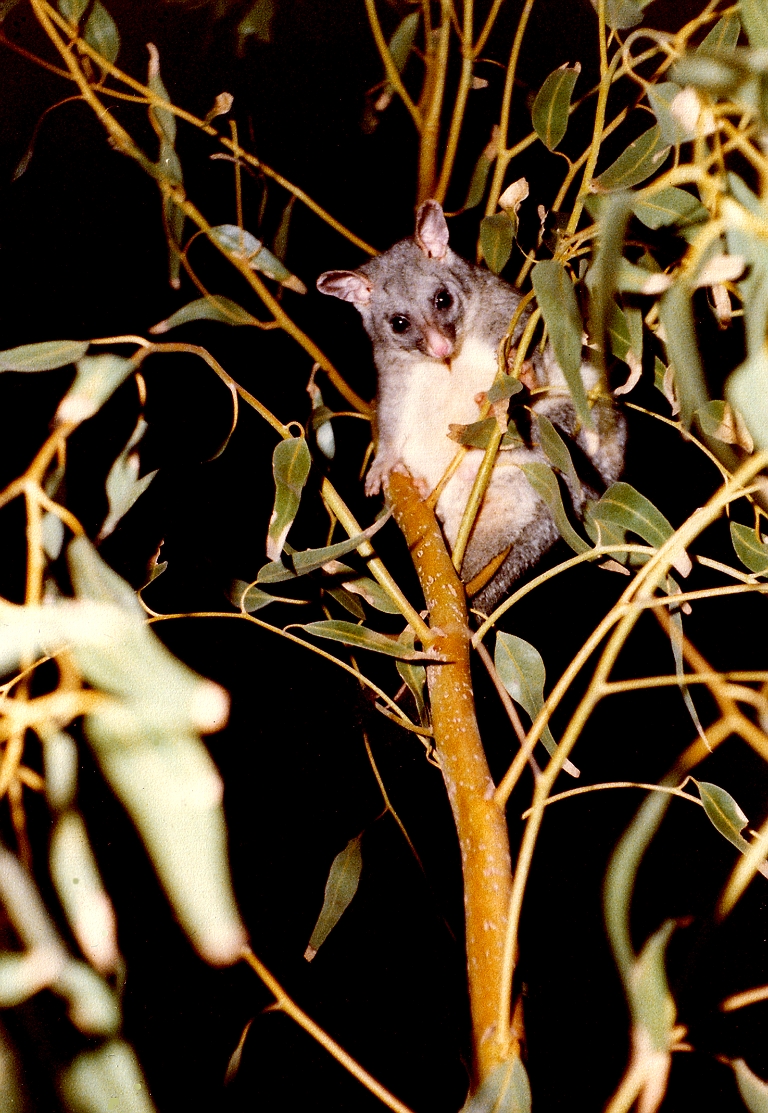 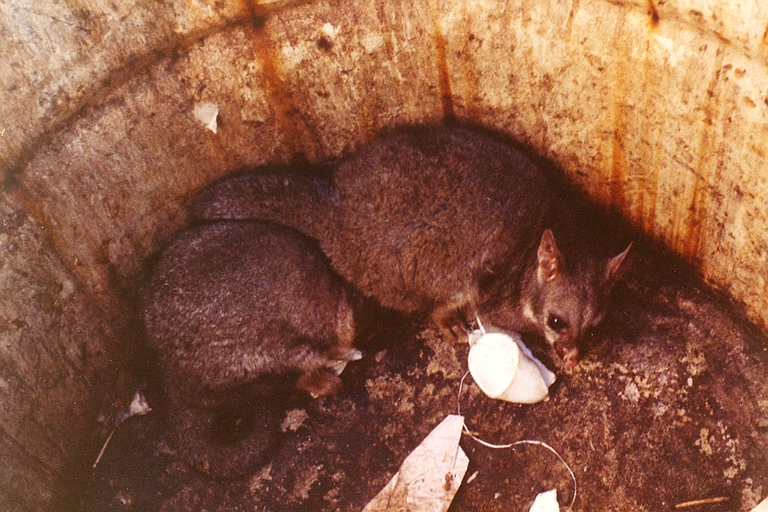 Possums are a feature of the Barrow
Island
environment and are very active scavengers. Upper - night shot of a
possum enjoying its perch in the tree. Lower - possums on Barrow had a
consistent affinity for 44 gallon drums, especially when used for
garbage. Convincing the possums to leave the drum could be often quite
difficult
(Flatbed scan from print).
|
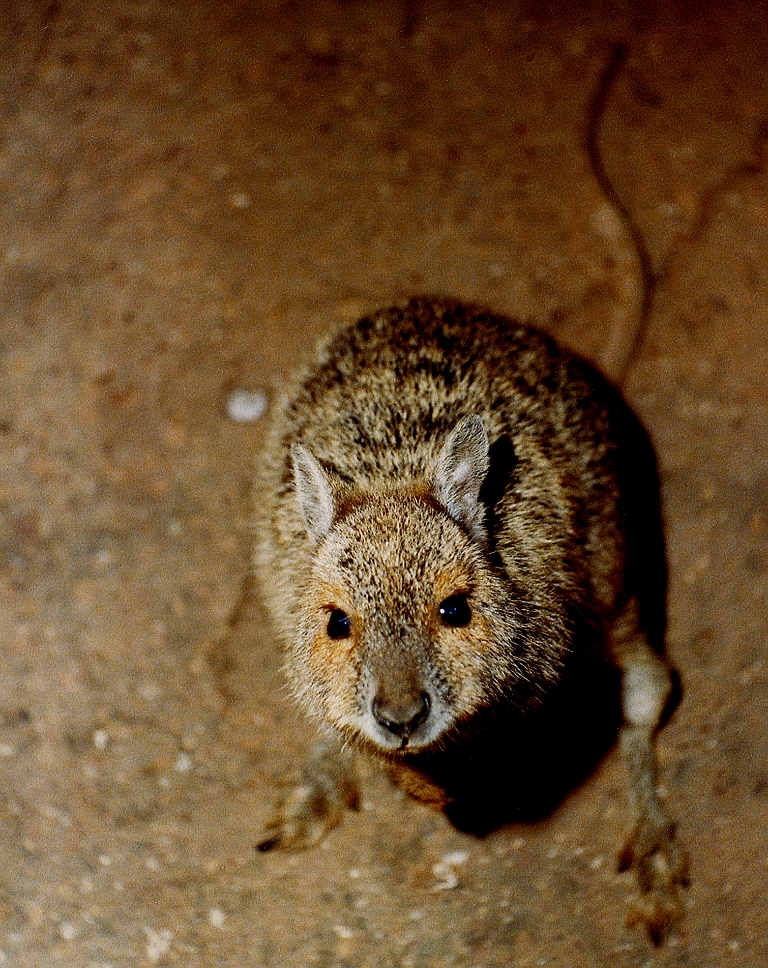 Wallabies are very common on Barrow and
often are completely unafraid, to the extent that I often observed them
snatching food from peoples' hands, even if not invited to do so (Flatbed scan from print).
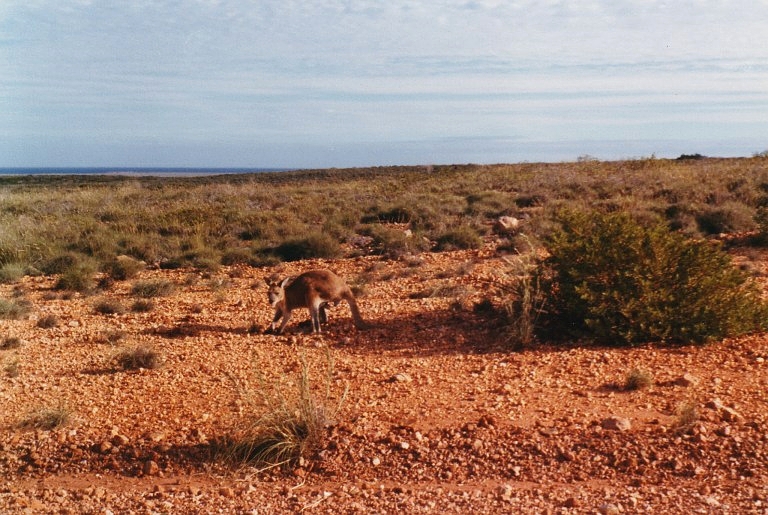 The euros are a species of small kangaroo
which has adapted to exist with little water. They are usually quite
shy
and difficult to photograph, unlike the smaller marsupials (Flatbed scans from print).
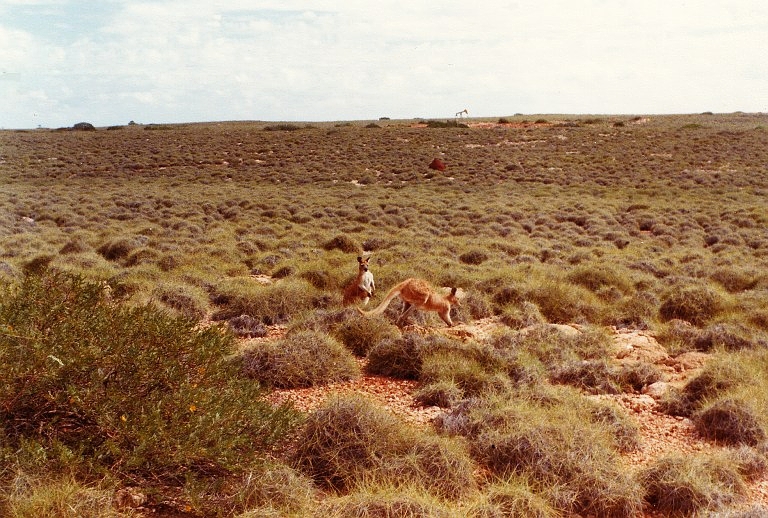 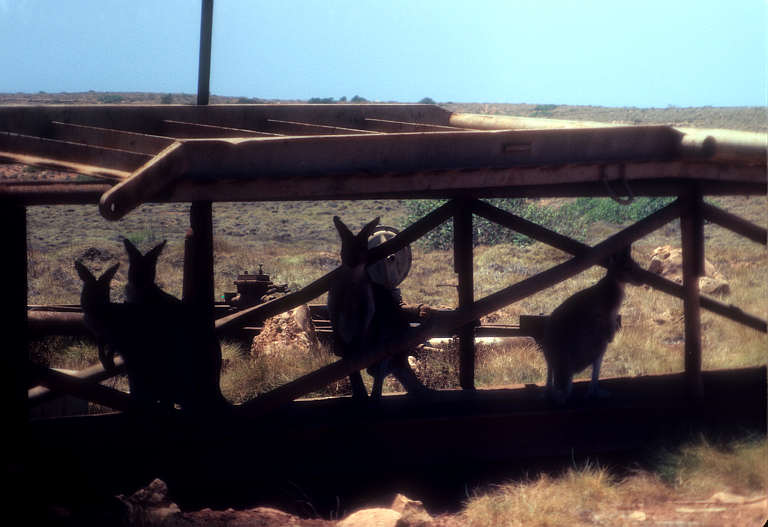 A small mob of Euros sheltering from the sun under an unused ramp (Nikon 5000ED linescan from slide). |
|
Barrow Island Reptiles |
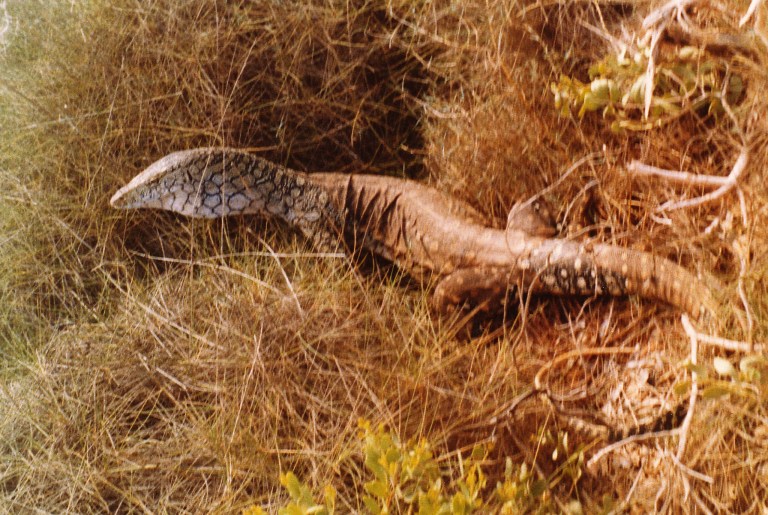 The principal land predator on
Barrow is
the perentie, a large goanna which hunts when opportunities arise, and
scavenges otherwise. All of the smaller marsupials were hunted by
goannas, and birds were also not immune. Top - a larger specimen, but
not the largest I saw - that beast was around 6 feet in length and
impossible to photograph due to lighting conditions on the day. Upper
middle - perenties enjoy shade and this made the main camp an
attractive
hiding place, one colleague ended up with 72 stitches in his hand after
reaching under his hut for his fishing gear. Lower middle - this
perentie was sunbaking during the morning, on top of a termite mound.
Bottom - death of a seagull - the perentie hid in the shade and then
ambushed the unwitting seagull with remarkable speed. The seagull then
had to suffer the indignity of being eaten alive by the reptile. The
latter frames in this sequence are decidely unattractive (Flatbed scan from print).
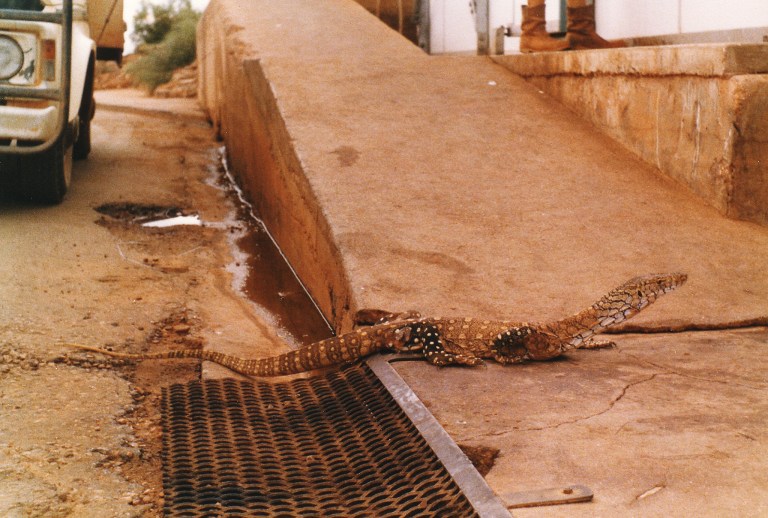 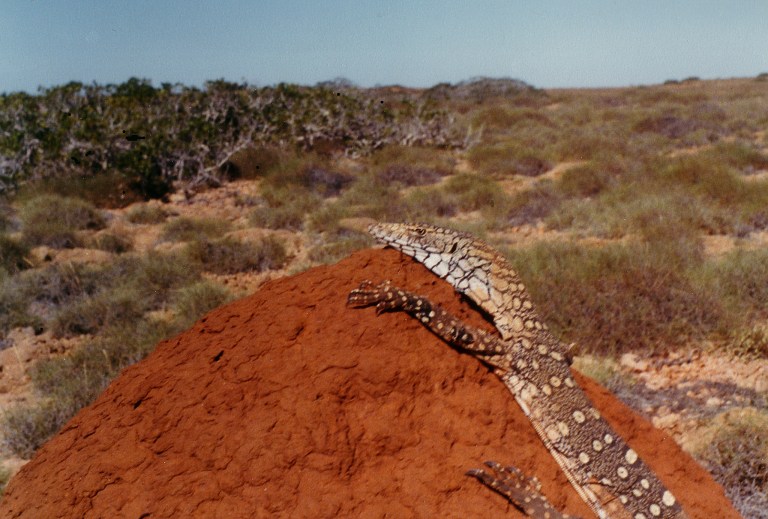 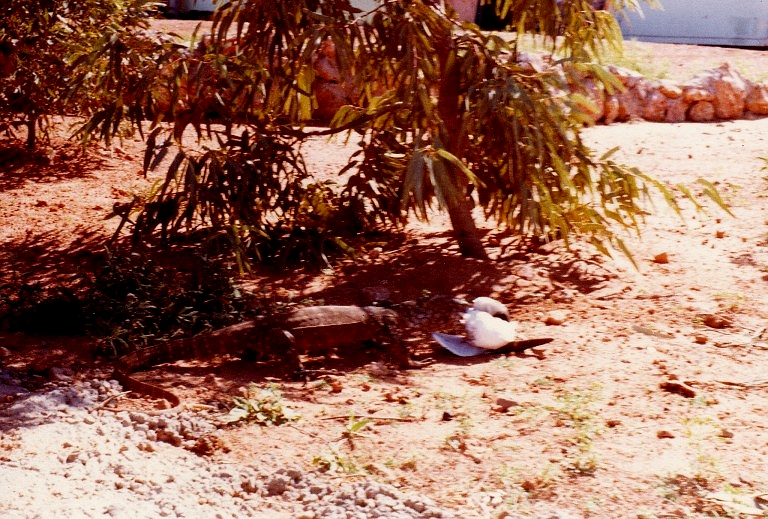 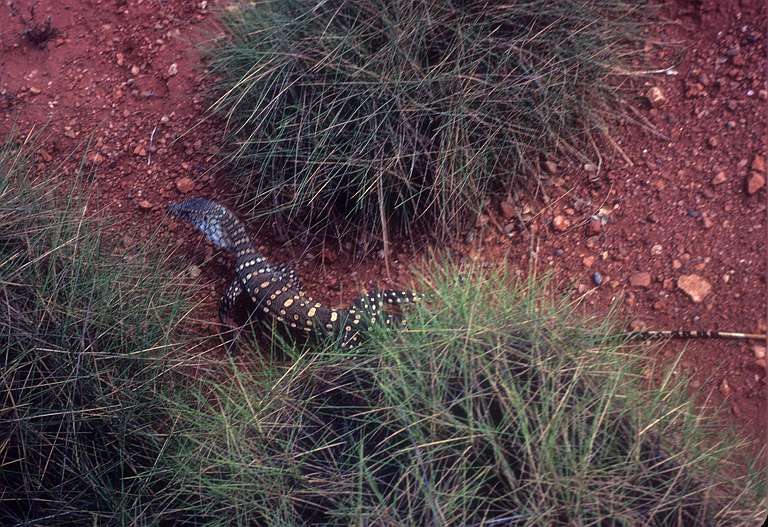 Smaller perenties frequently hide under
spinifex clumps, both to shelter from the heat and wait in ambush for
hapless birds and mammals
(Nikon
5000ED linescan from slide).
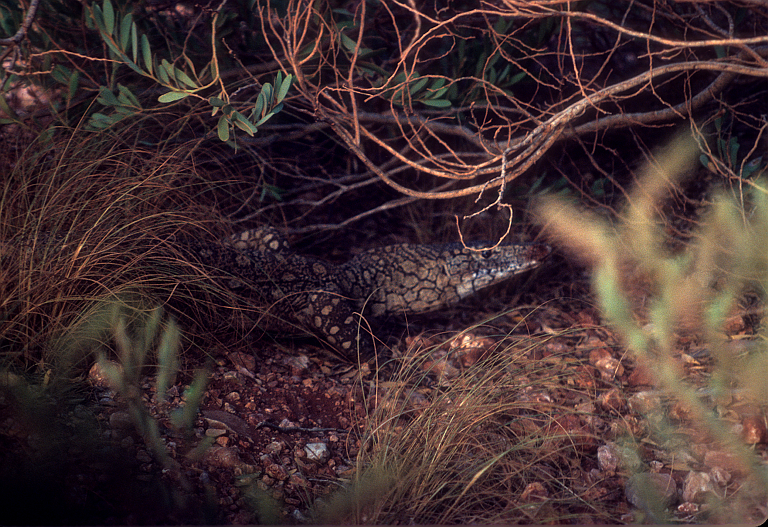 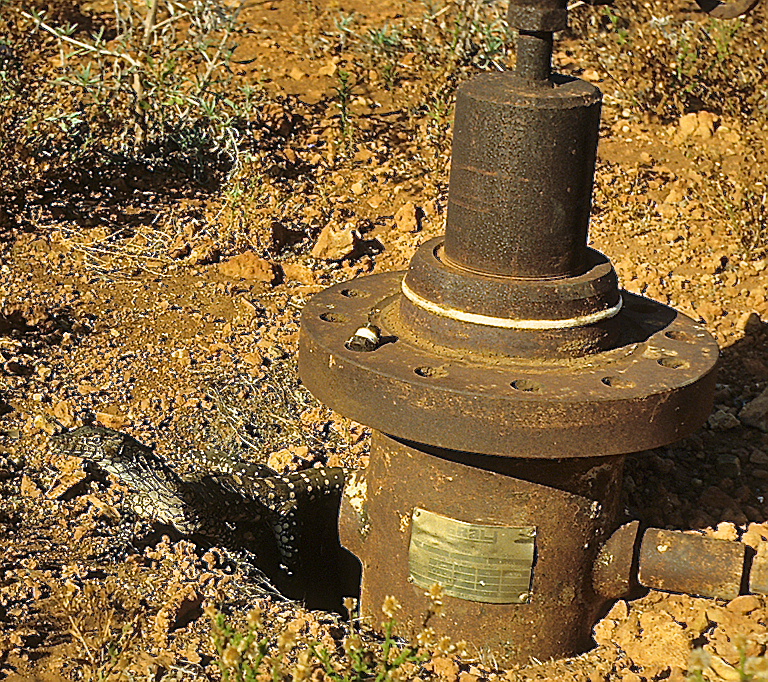 A wellhead makes a good shelter for a small perentie (Nikon 5000ED linescan from slide). 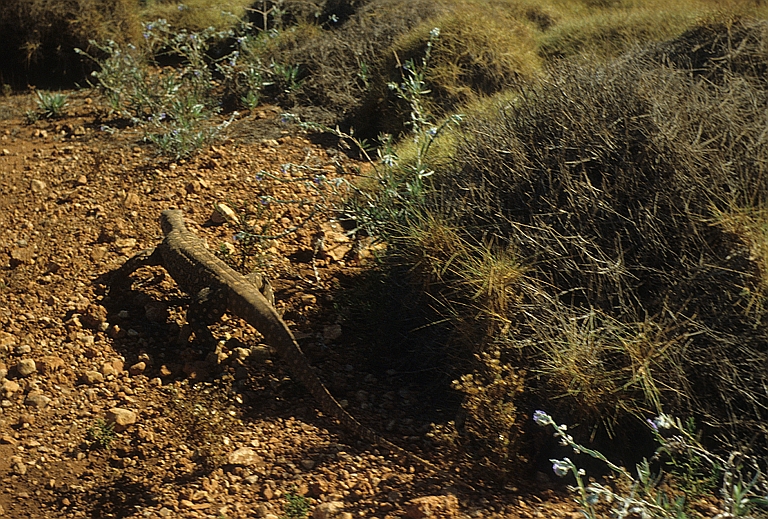 The mottled camouflage pattern is well adapted to the rocky habitat (Nikon 5000ED linescan from slide). 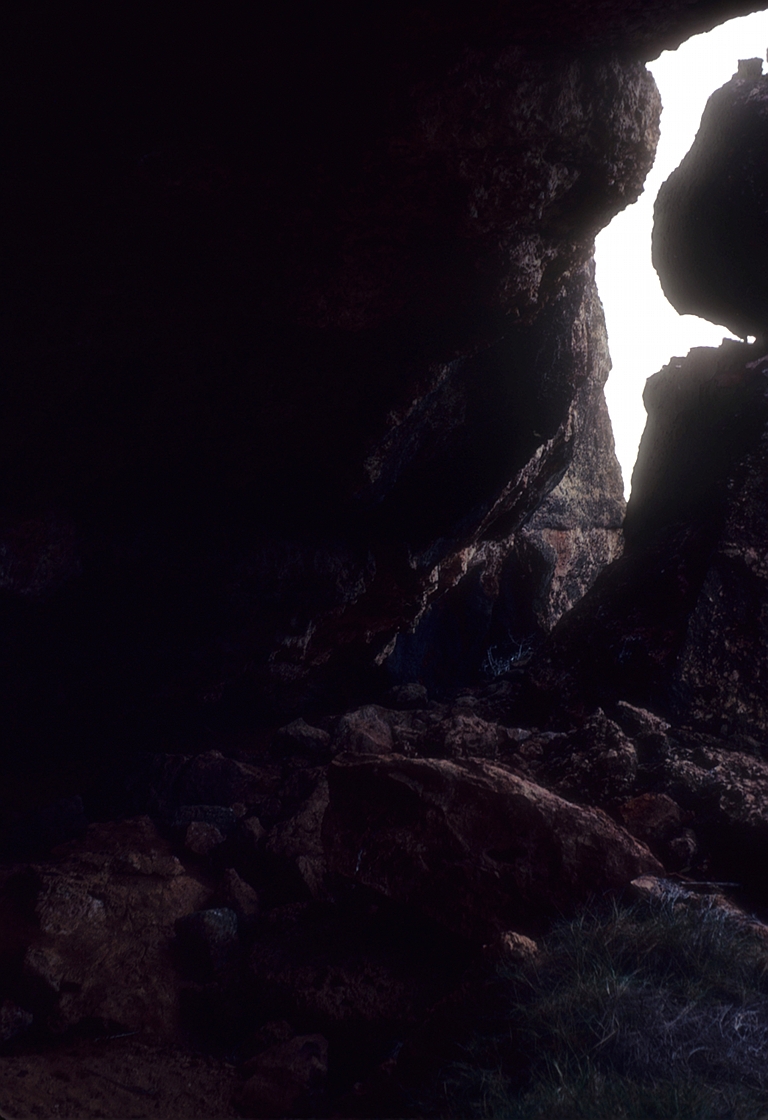 The northern part of Barrow Island is rocky and contains numerous gorges, crevices and shallow caves. These are frequently used by perenties for shelter. Above view of a gorge, a perentie lower right corner detailed below (Nikon 5000ED linescan from slide). 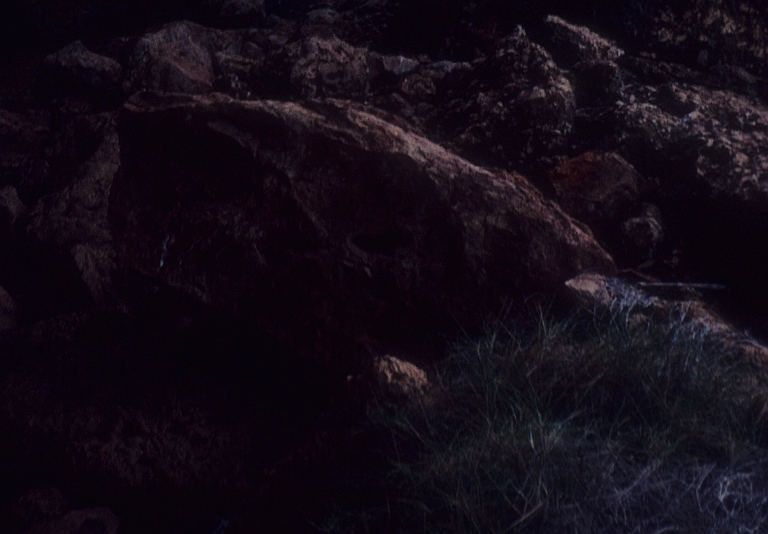 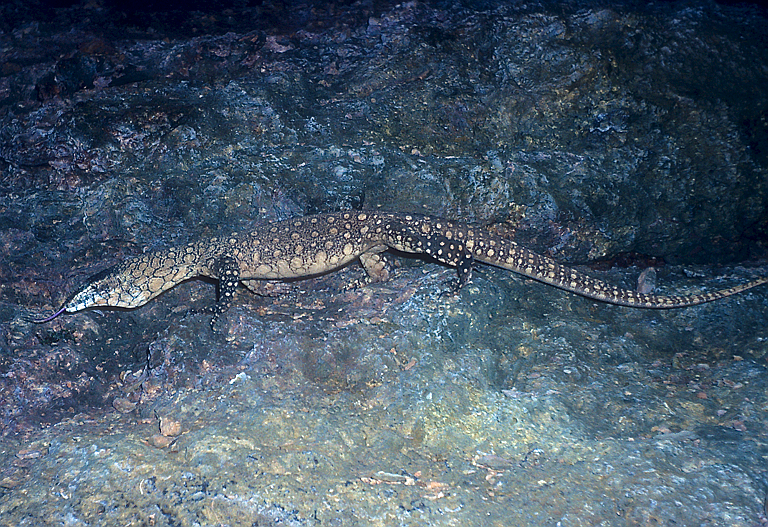 Above and below, a perentie moving
through a cave, tongue extended to read scent trails. The largest I
observed was hiding in such a cave a measured around 6 feet nose to
tail (Nikon
5000ED linescan from slide).
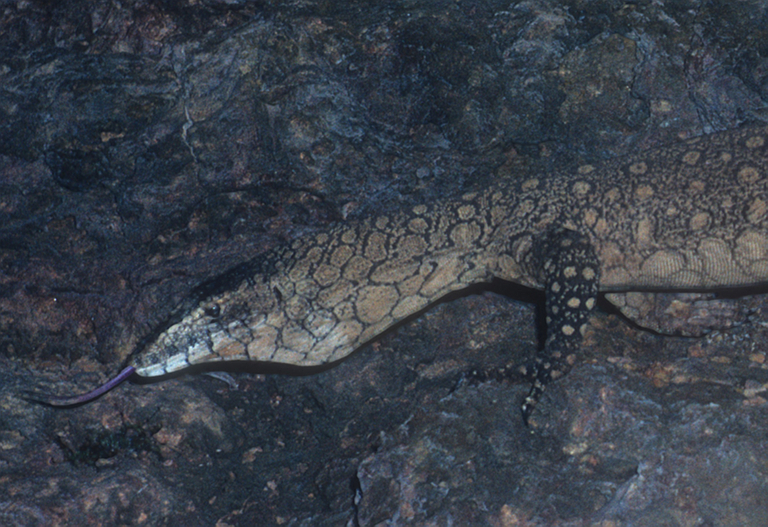 |
|
Barrow Island Birds |
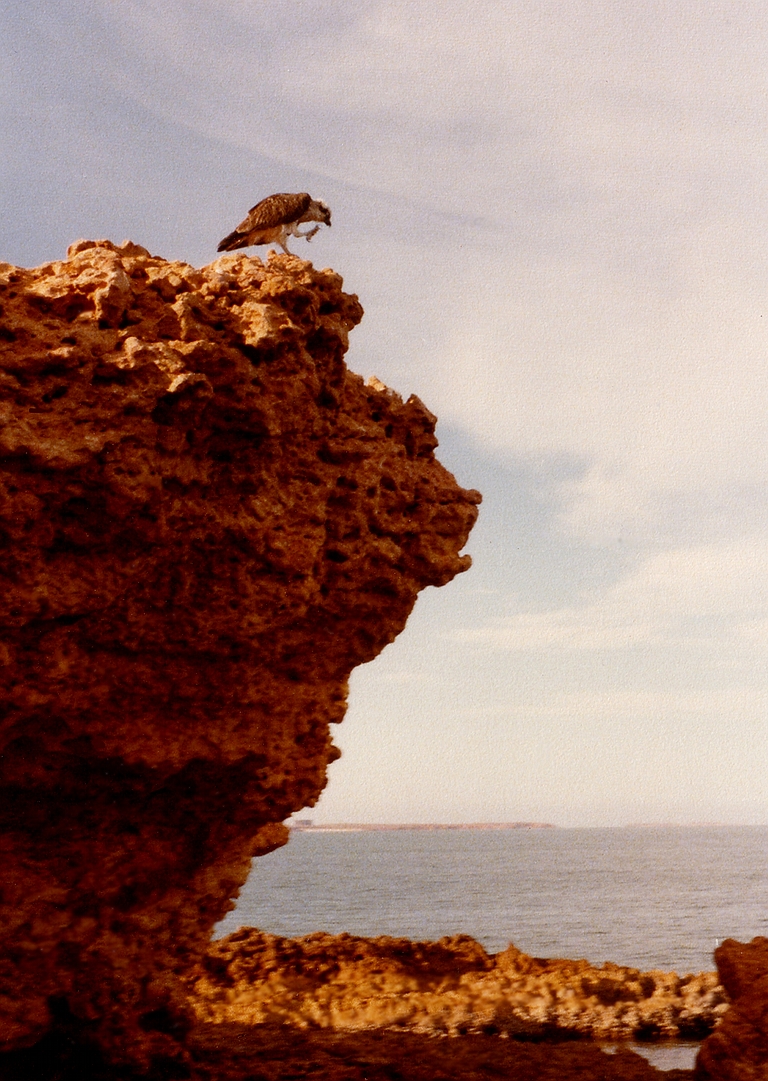 The largest raptors on Barrow were the
ospreys which would hunt and scavenge as opportunities permitted. They
were difficult to photograph without zoom or telephoto lenses since
they
were usually very shy. The most interesting encounter I recall was an
osprey attempting to lift a dead wallaby which must have been heavier
than the bird itself. After much furious flapping it managed to get
airborne but was unable to escape the ground effect and carried its
booty away with a ground clearance of about six inches (Flatbed scan from print).
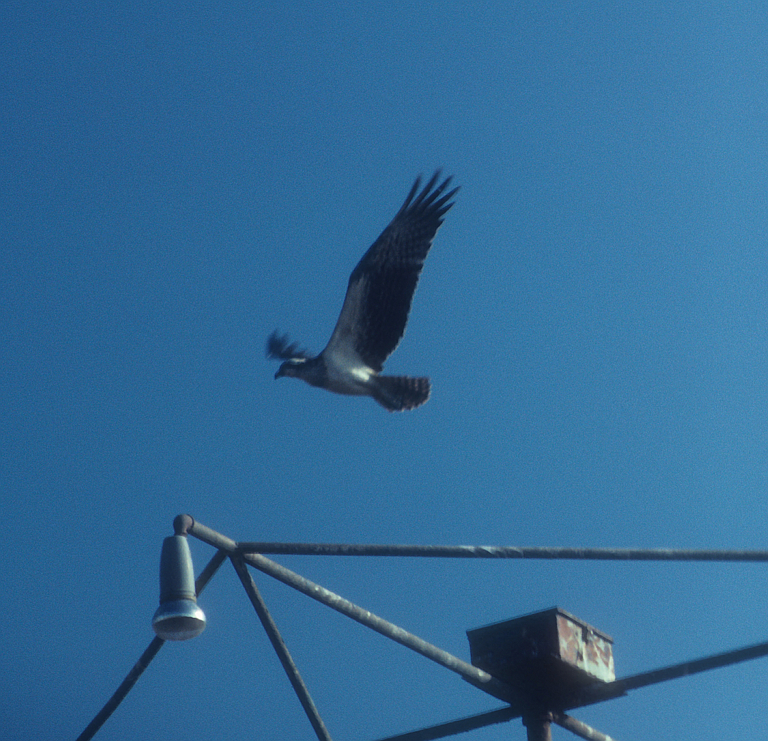 Ospreys will exploit any elevated
structures as perches, to gain a comfortable vantage point (Nikon
5000ED
linescan from slide).
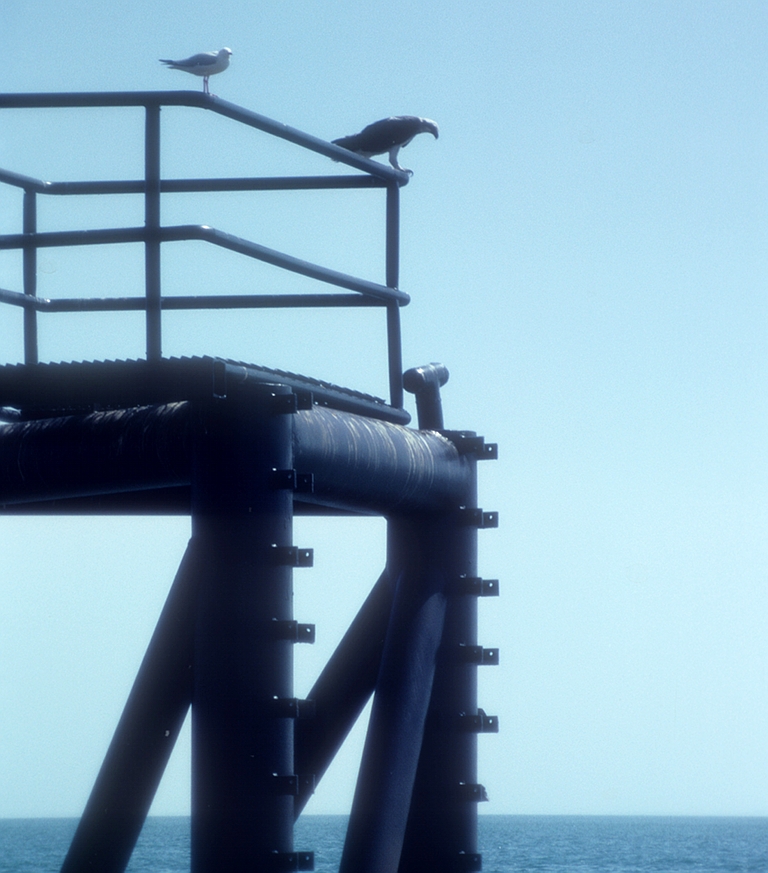 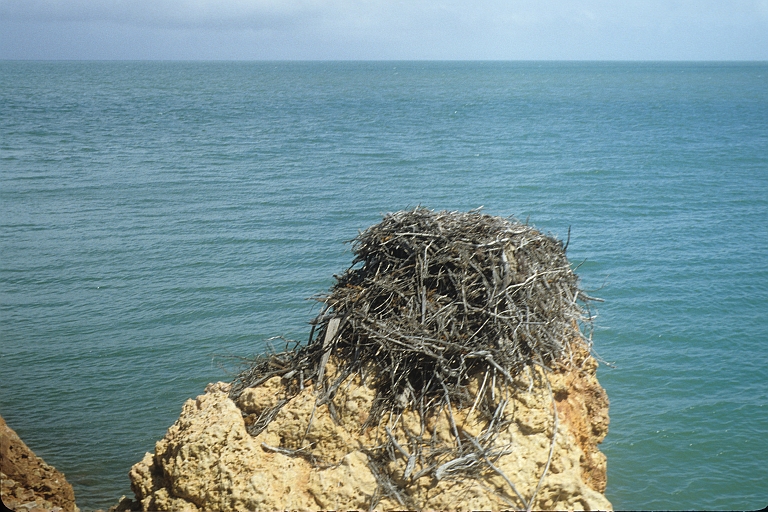 |
|
Barrow Island Aquatic Life |
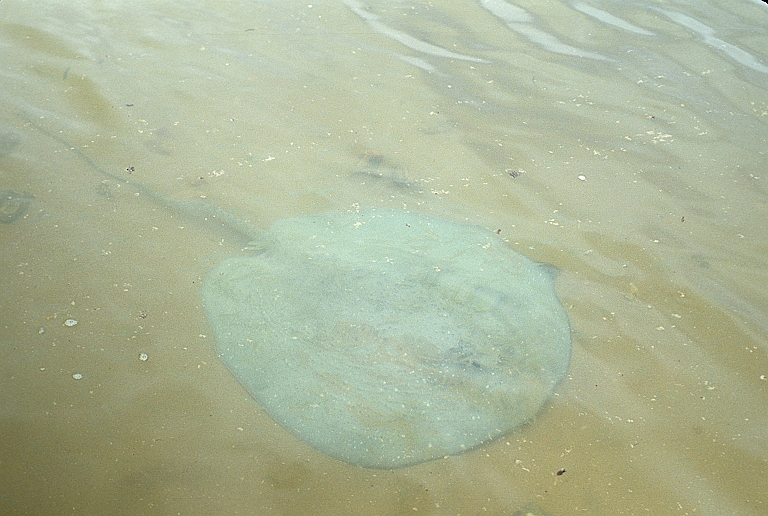 The tidal flats along
the south of the
island were teeming with marine life.
Above a
stingaree basking in shallow water, covered with fine sand which
obscures detail (Nikon
5000ED
linescan from slide).
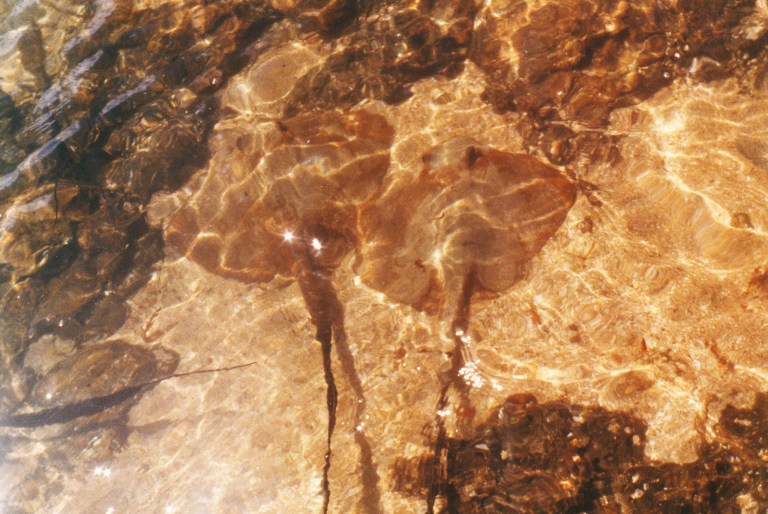 Upper - a pair of small stingrays
are basking in three inches of water at low tide - the noise of the
camera shutter startled them so this was a once only shot (Flatbed scan
from print).
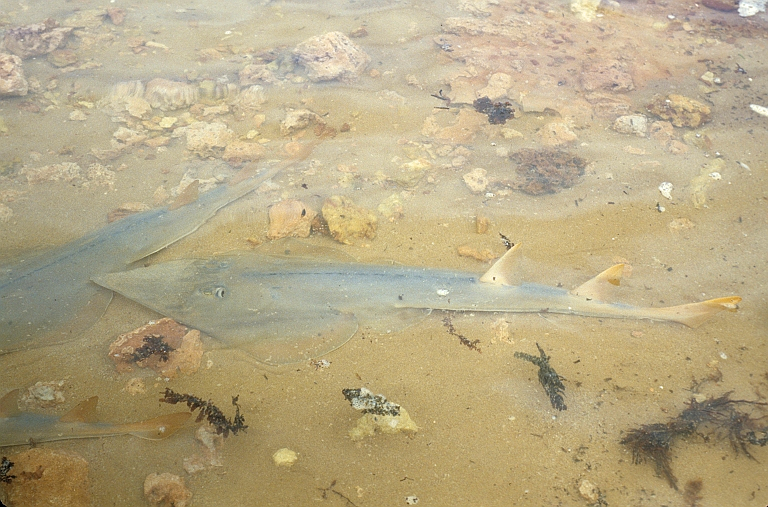 Three Shovel Nose Rays basking in shallow water, so shallow that the dorsal fins are protruding out of the water (Nikon 5000ED linescan from slide). 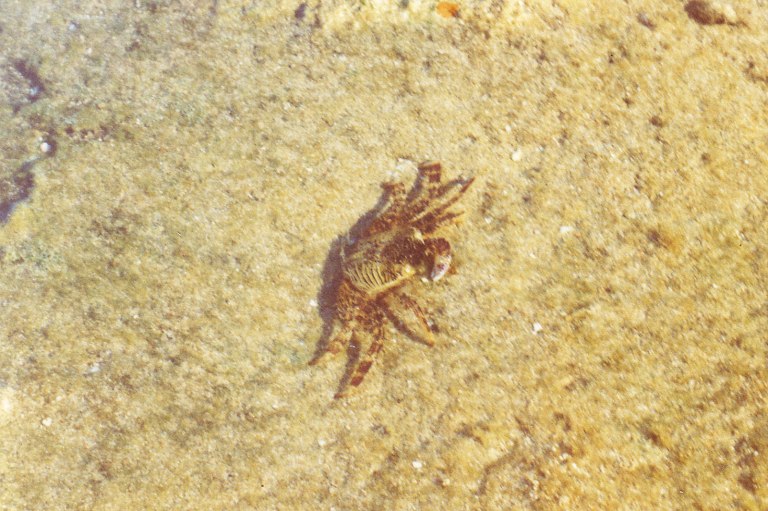 Numerous
small crabs could be frequently observed at low tide (Flatbed scan from
print).
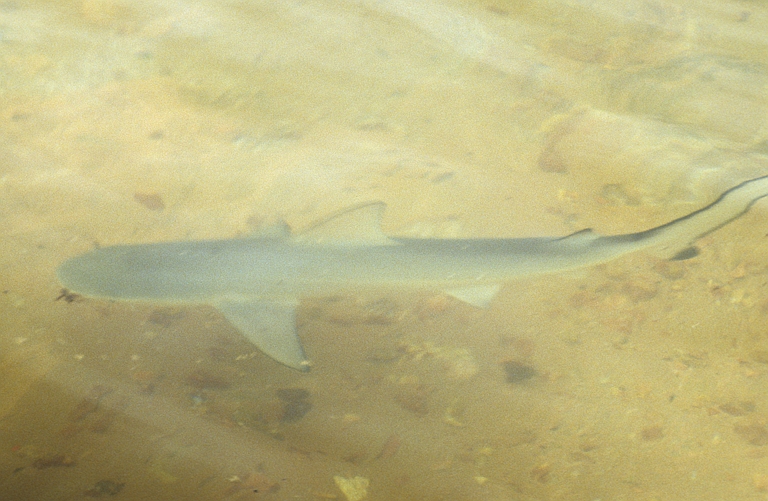 Above, below, sharks in shallow tidal flat
waters, images taken from offshore wellhead pads. With the tide in and
depth of 6 to 8 feet, often large sharks and rays could be observed
swimming just under the surface (Nikon 5000ED linescan from slide).
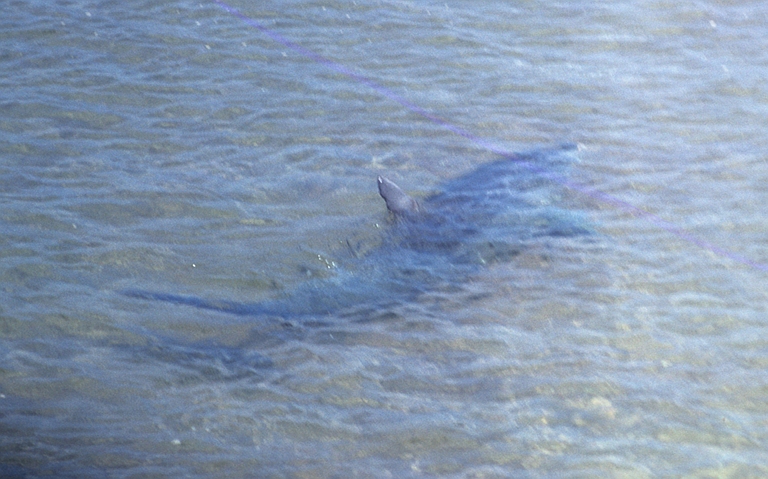 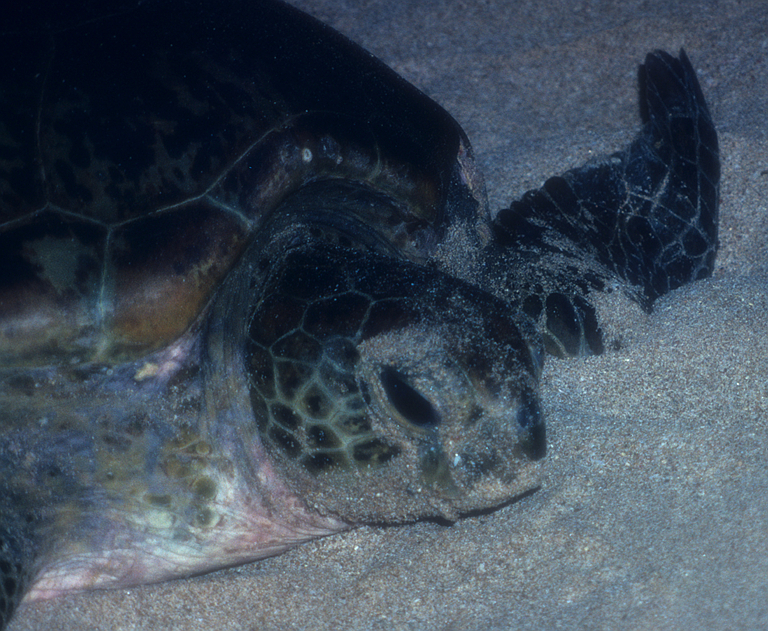 Green Sea Turtles use Barrow island as a
nesting site, and large numbers will storm the beaches to lay eggs in
season. The turtles are shy and easily disturbed (Nikon 5000ED linescan from slide).
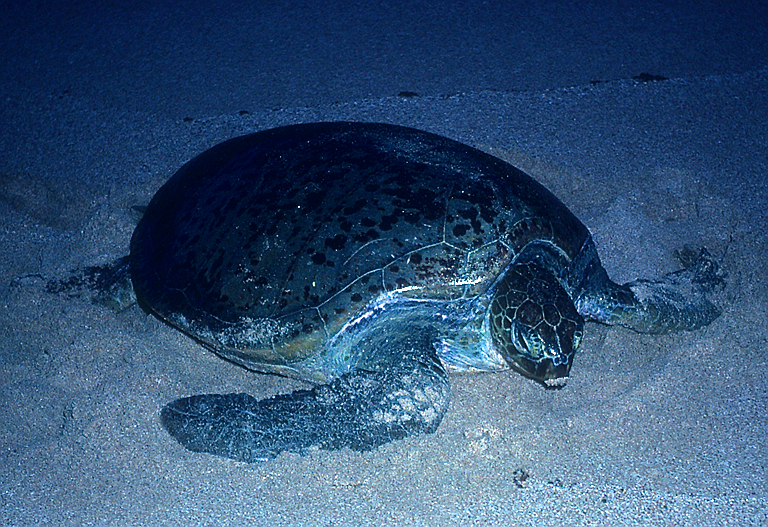 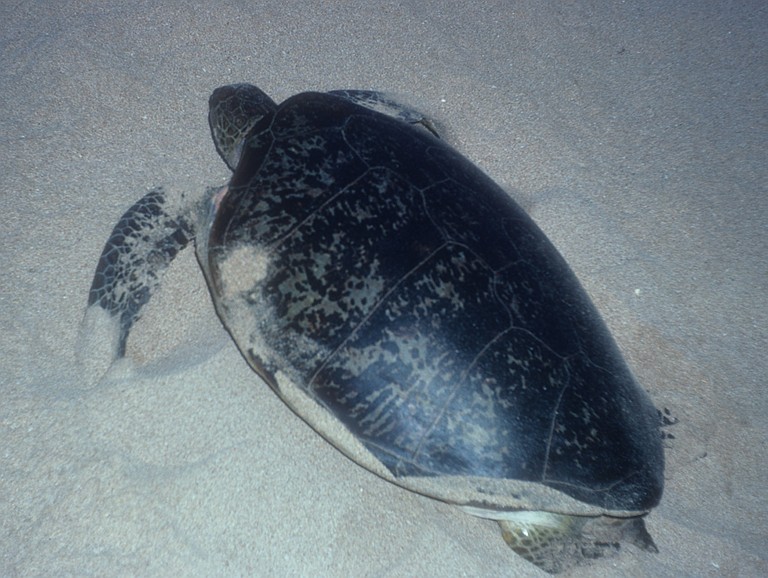 Below,
a
Green Sea Turtle departing the beach (Nikon 5000ED linescan from slide).
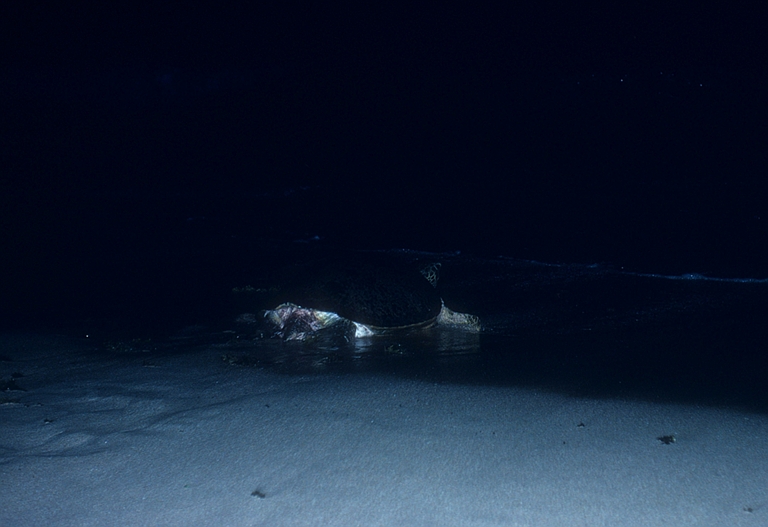 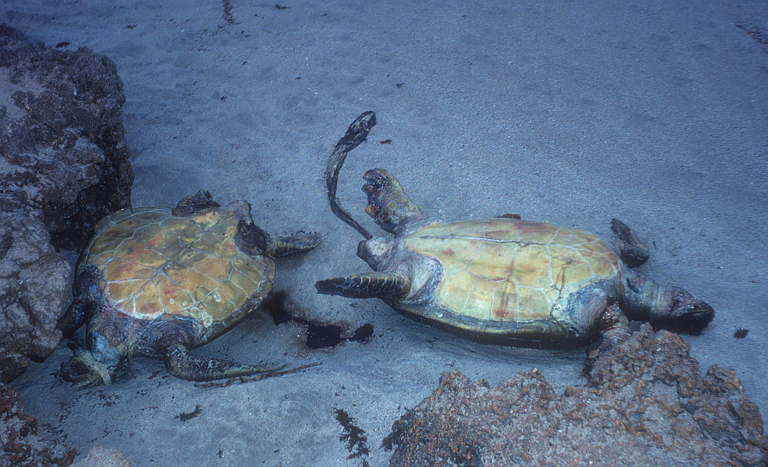 A pair of deceased Green Sea Turtles which
retreated from the beach as the tide went out and flipped upside down
climbing over the outcrops. Unable to right themselves with the tide
out, they expired from heat stroke during the subsequent day (Nikon
5000ED linescan from slide).
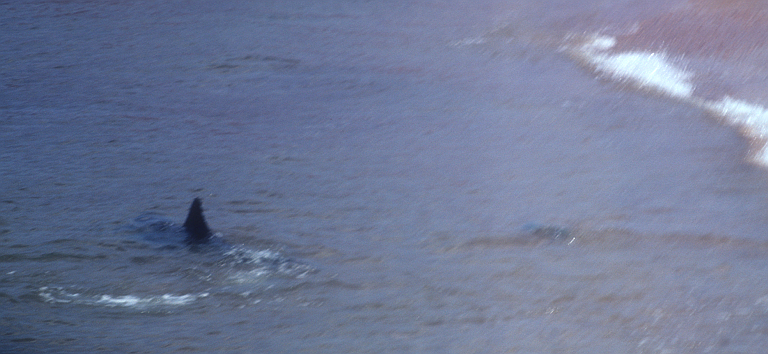 An unusual sight, a dolphin chasing a
large fish, likely a coral trout, at the northern landing area. The
fish retreated into the shallows, and the dolphin could not catch it.
The fish swam parallel to the surf line, with the dolphin tracking it.
My presence taking the photo from the jetty startled the cetacean, and
its hesitation allowed the fish to escape (Nikon 5000ED linescan from slide).
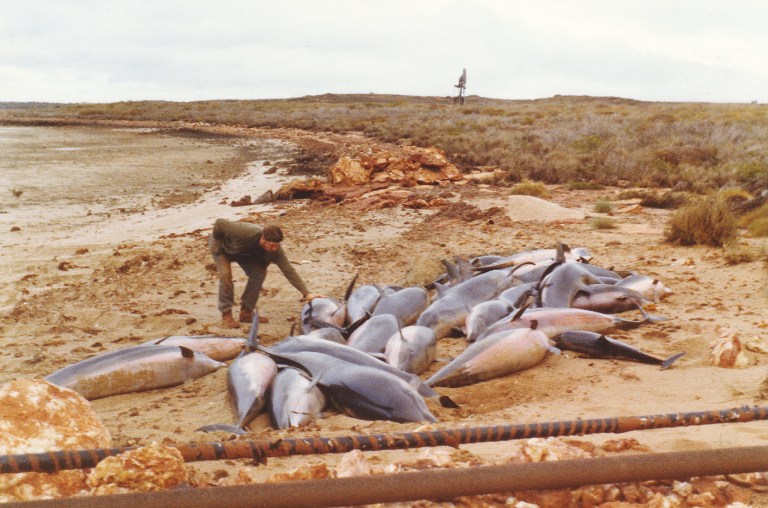 Tragedy on the beach. This pod of Common
bottlenose dolphins (Tursiops truncatus)
beached itself, and after two attempts to refloat them, repeatedly
returned to the beach to die. The hapless cetaceans were photographed
shortly before their burial (Flatbed scan from print).
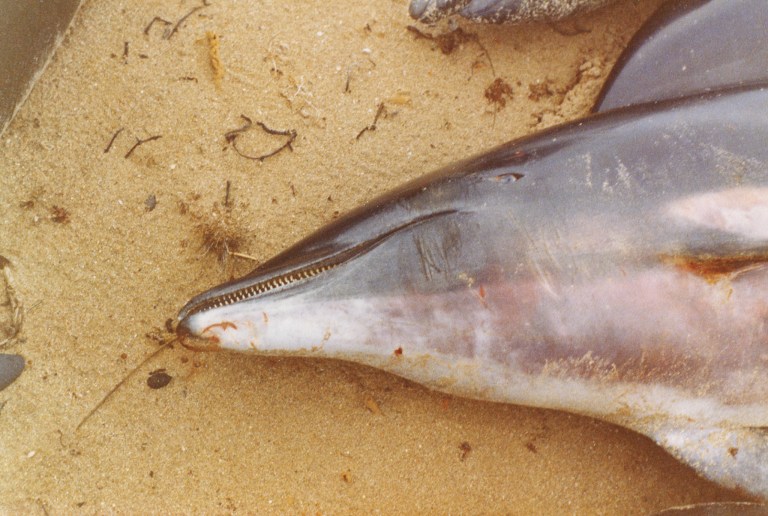 |
|
Barrow Island Habitats |
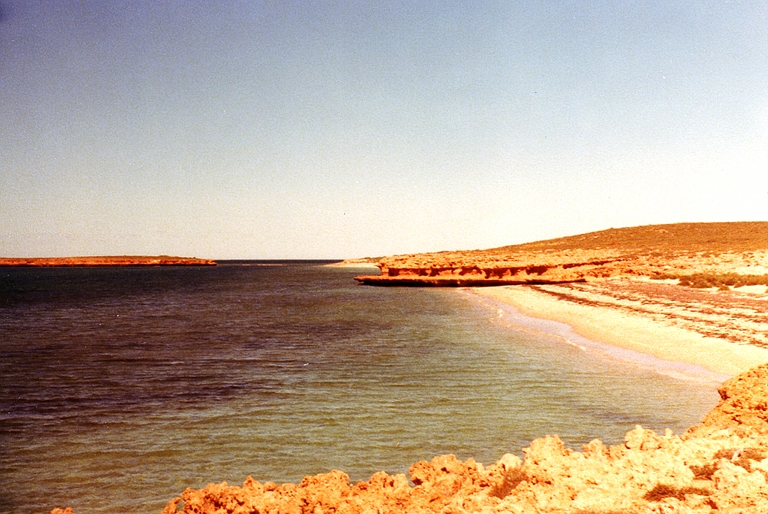 The
coastline of Barrow Island differs considerably between the northern
and
southern parts of the island. The north has some beaches but also much
rock, whereas the southern part of the island is very flat with large
tidal areas, often completely exposed at low tide (Flatbed scan from print).
|
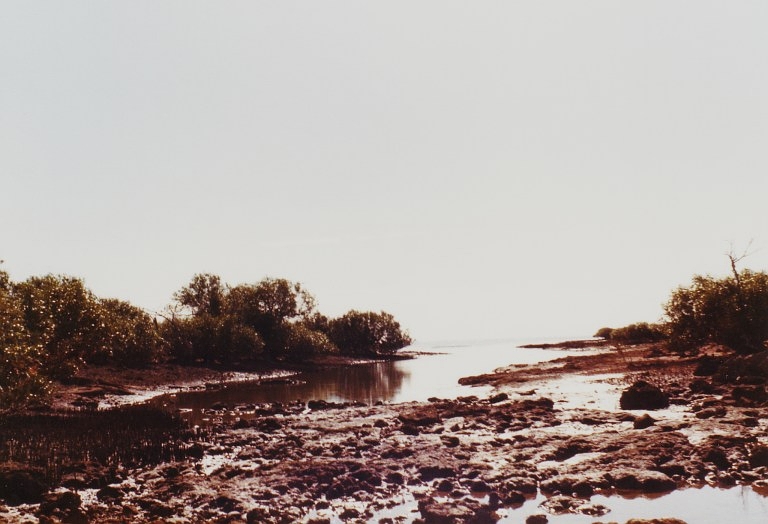 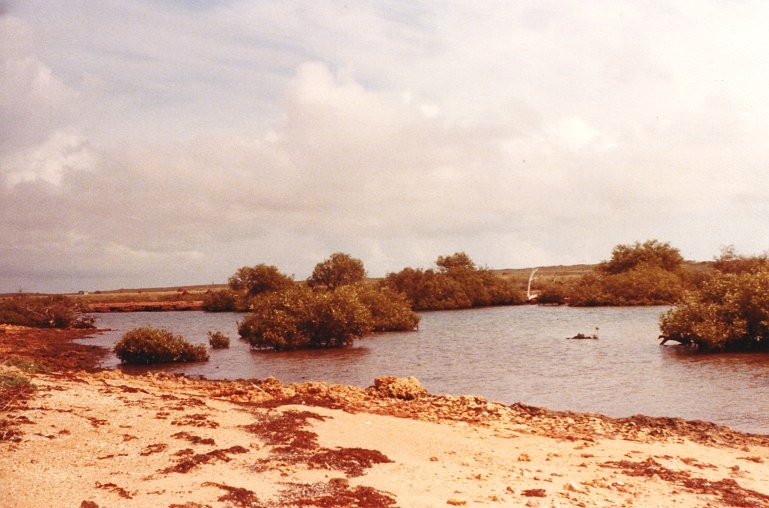 There are numerous small inlets along the
island's coast and many of these are overgrown with mangrove trees,
which are very common on the mainland. The upper image is at low tide (Flatbed scan from print).
|
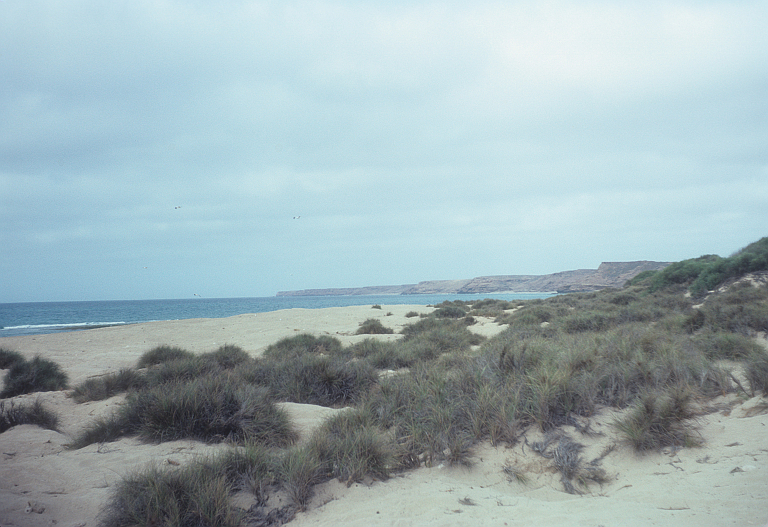 A beach along the northern coast, with
rocky outcrops and cliffs in the background. The two specks above the
ocean are seabirds - not scanning artefacts (Nikon 5000ED linescan from
slide).
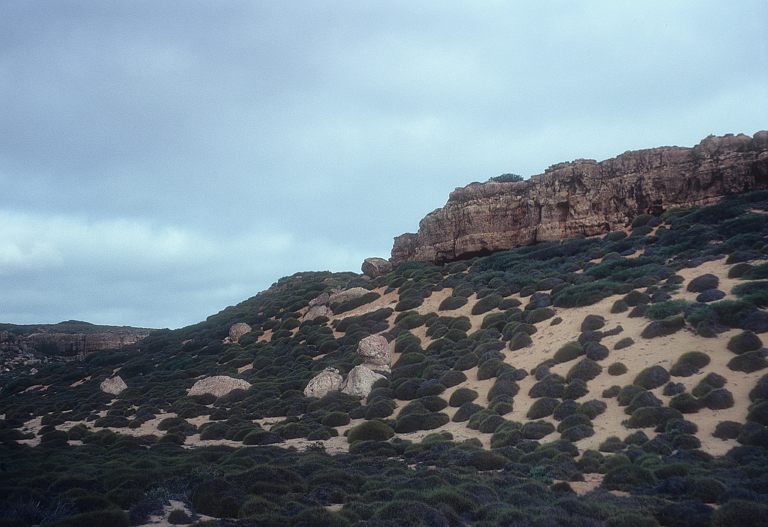 The northern part of the island includes many interesting habitats, including sand dunes connecting beaches with the rocky outcrops and cliffs (Nikon 5000ED linescan from slide). 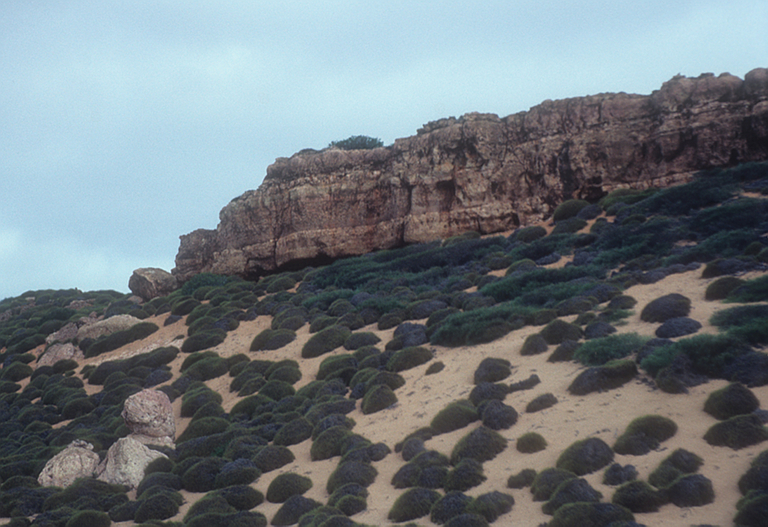 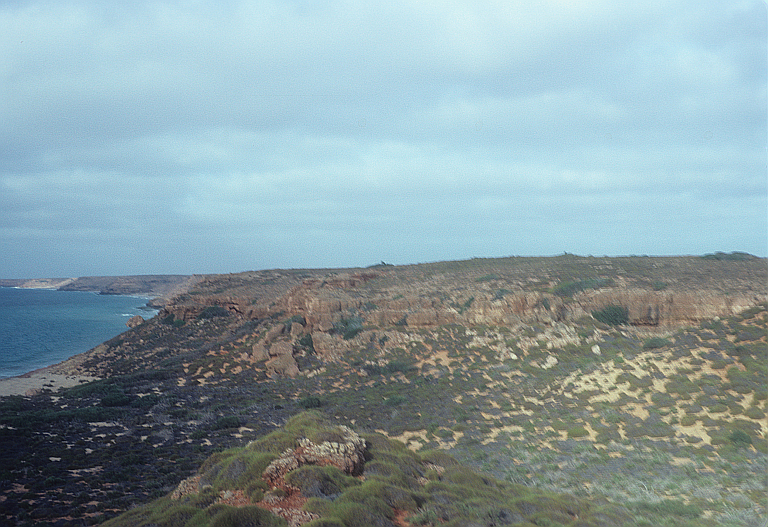 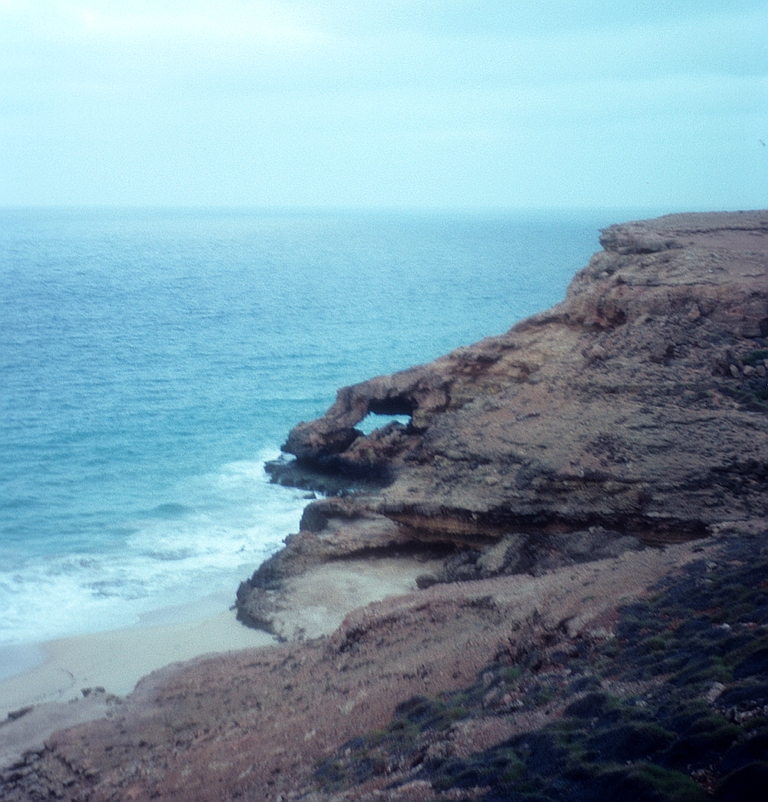 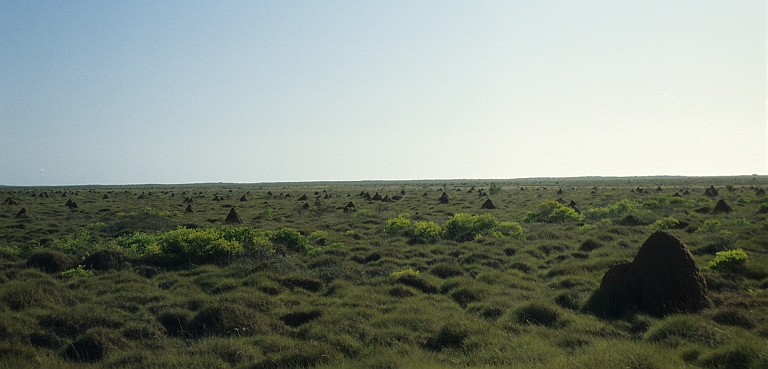 The
southern flats on Barrow Island are covered with dense thickets of
spinifex, up to three feet tall, and are studded with large numbers of
termite mounts. Annually, after the rains, vast numbers of winged
termites depart their nests and cover all in sight (Nikon 5000ED linescan from slide).
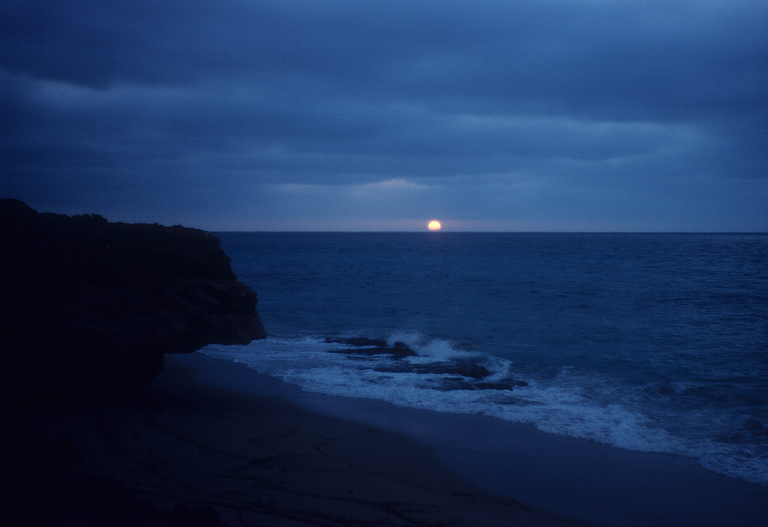 Three sunsets on Barrow Island (Nikon 5000ED linescan from slide). 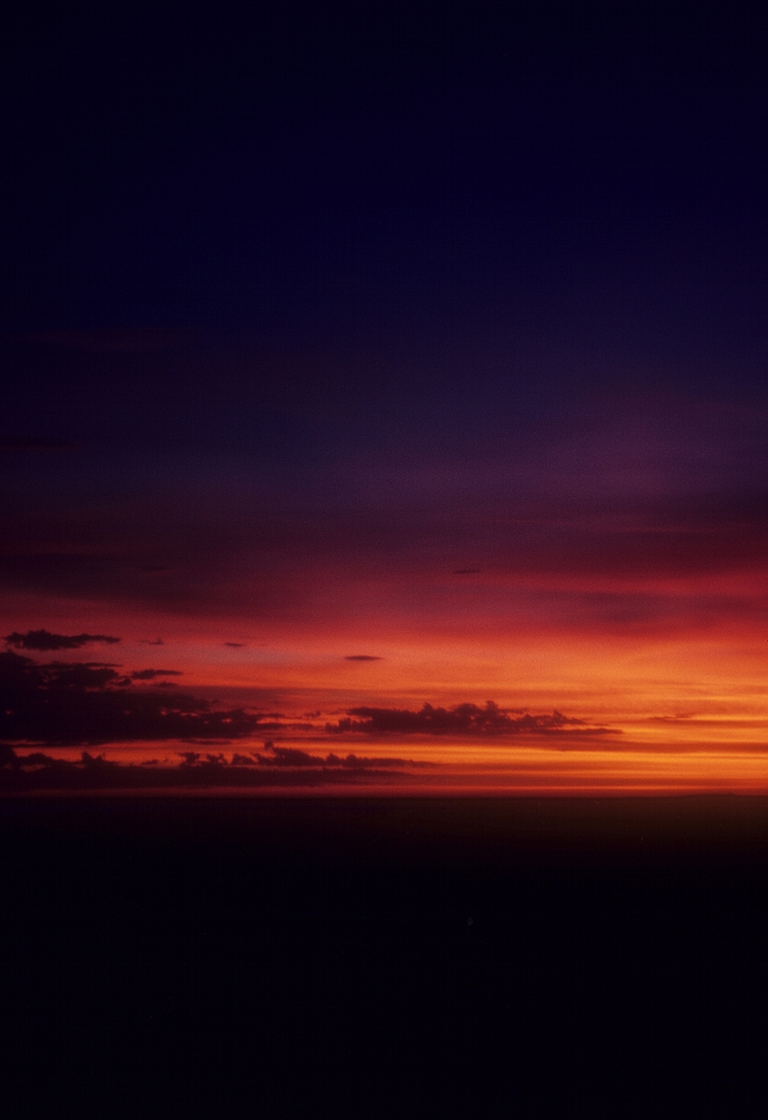 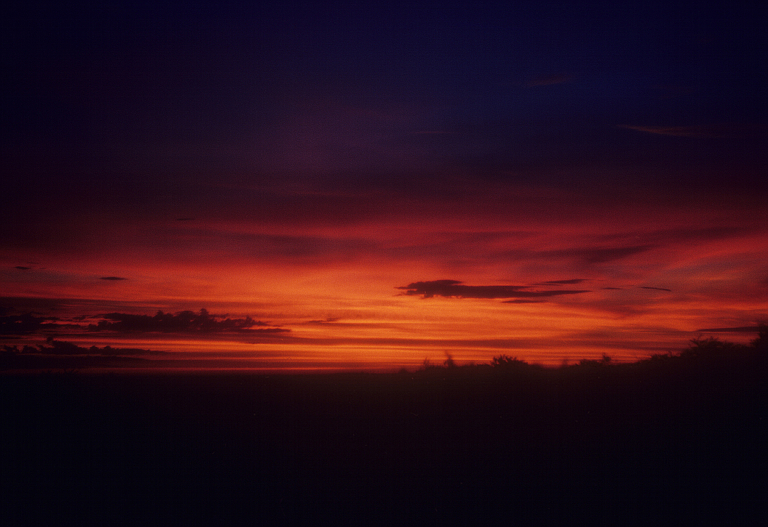 |
 |
|
|||||||||||||||
| Artwork and text ¿ 1994 - 2010 Carlo Kopp; All rights reserved. |
| $Revision: 2.279 $ |